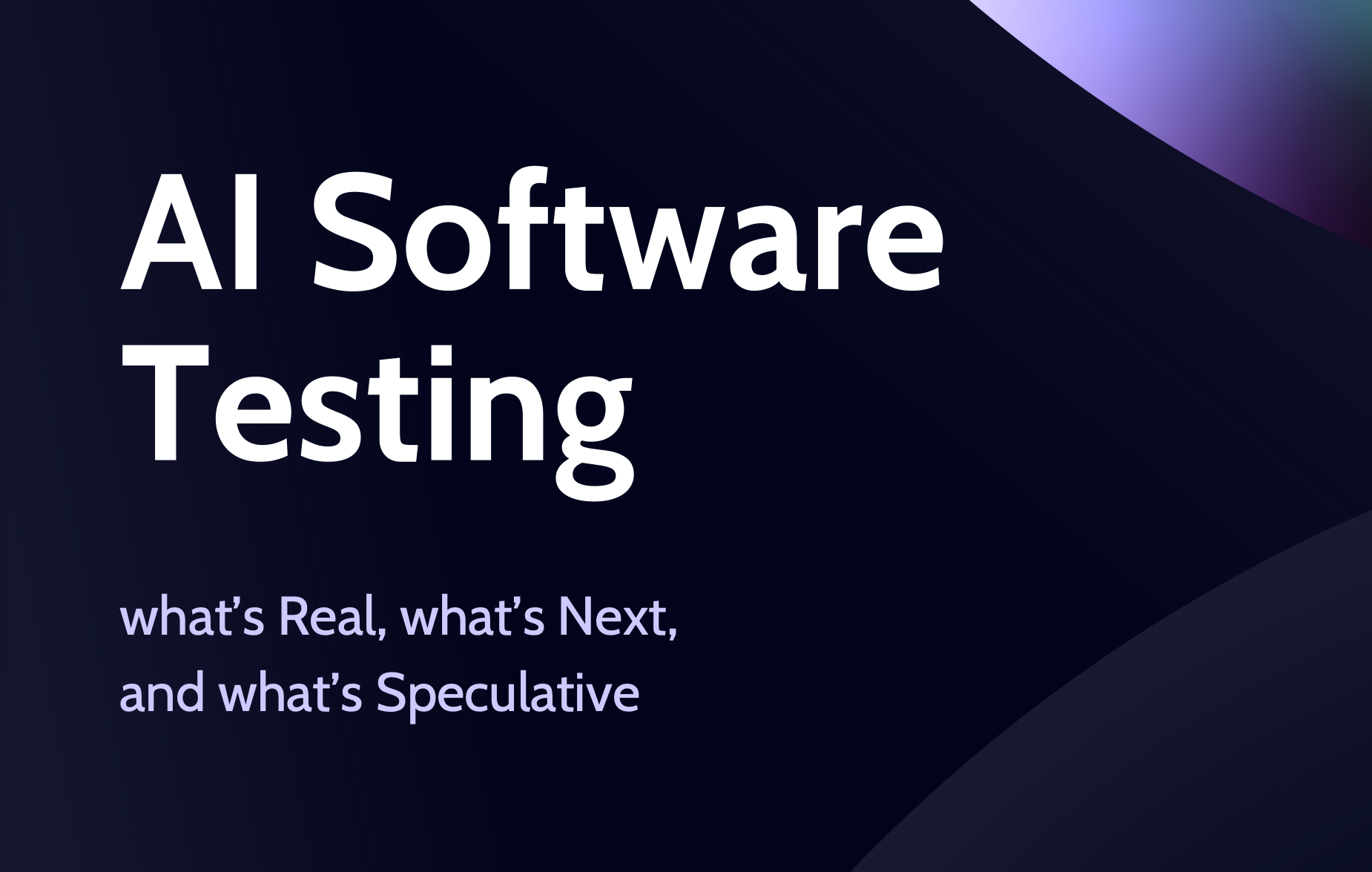
Introduction
Testing is one of the few engineering activities that directly determines whether a company survives or collapses.
When testing fails, it’s not just bugs that slip through. This failure might incur financial, operational, and reputational damage that will devastate the entire organization.
Consider just a few examples:
- In 2012, a simple regression error in automated trading software caused Knight Capital a $400 million loss in 45 minutes.
- In 2024, an untested update of CrowdStrike software triggered a global outage across millions of Windows systems, wiping out an estimated $10 billion in market value.
- In 2024, insufficient testing of the Boeing MCAS control logic and its integration contributed to cascading safety issues and losses exceeding $60 billion in market capitalization and penalties.
Each of these disasters stemmed from inadequate or misdirected testing, whether from missing test coverage, flawed test design, or a misunderstanding of what "kind" of testing was needed.
Despite testing’s existential importance, the discipline itself remains conceptually tangled. Teams often confuse types with levels, approaches with strategies, and techniques with tools. The result is predictable: suboptimal testing strategies that waste resources, duplicate effort, or fail to prevent the most critical risks.
This article aims to untangle that confusion.
It provides a structured map of software testing, explaining how various testing concepts, from unit to chaos, from shift-left to risk-based, fit together.
Understanding the Foundations: What Do We Mean by "Testing"?
Testing is often described as a technical or procedural activity: running checks, writing test cases, or executing suites. But fundamentally, testing is an economic and risk-management function.
to read more, examine Vitaly's study on the economics of testing
TL;DR: the process is simple: we identify and prioritize risks -> pick where to test (levels) -> pick what quality to target (types mapped to QCs from ISO/IEC 25010) -> pick how to design tests and how much to cover (techniques + measures) -> choose how we’ll work (practices) -> balance static and dynamic work.
Only when we see testing through this economic lens, does it become clear why we need different levels, types, approaches, and strategies: each addresses distinct classes of risks.
NB: This article uses ISO 29119 (software testing) together with ISO 25010 (quality model) as its backbone. Part 1 of 29119 defines concepts and terminology; Part 2 defines the test processes; Part 3 the documentation; Part 4 the test design techniques (aka test methods); Part 5 covers keyword-driven testing. Static reviews are defined in ISO/IEC 20246.
Complete Testing Taxonomy
ISO 29119 organizes testing along several dimensions that you mix‑and‑match when you write a test strategy.
- Static vs Dynamic
- Test Levels
- Test Types
- Test Design Techniques & Coverage
- Test Practices
- Risk-based Strategy
1. Dynamic vs. Static testing
First, there's a big distinction between dynamic and static testing.
Static testing implies evaluating software without execution, for instance:
- code reviews/inspections (ISO 20246),
- SAST/linters,
- architecture/design/protocol/contract/spec reviews,
- formal/spec/model verification.
"Static" and "dynamic" testing are fundamentally different ways of producing test evidence: different when, what, how much, and how costly. Static testing implies examination without executing the software; dynamic testing implies executing the system to observe behavior.
Static testing needs only artifacts like requirements, designs, code, configs, or models, so you can act weeks earlier; dynamic testing requires a working product. Static excels at catching insecure coding patterns, dependency issues, unreachable states, and missing requirements, while dynamic is the only way to see emergent behavior, such as runtime integration faults, concurrency/timing issues, performance under load, real security exposures, and UX problems, etc.
The split is economic as well. Defects removed in reviews or static analysis are typically far cheaper than those found after assembly or deployment.
Also, in many regulated or safety-critical contexts, compliance often mandates specific static activities (coding-rule conformance, threat modeling, formal reviews) in addition to dynamic tests.
All testing activities which imply executing the system fall into dynamic testing category.
2. Test levels (where in the lifecycle?)
Test level categorises where tests are written in the system hierarchy/lifecycle (unit -> integration -> system -> acceptance).
Different levels expose different fault classes: unit/component work is best at catching local logic errors and boundary conditions; integration/contract work reveals interface and protocol mismatches; system testing exposes end-to-end behavior, configuration, and cross-cutting concerns; acceptance/field testing validates suitability for users, operations, and regulations. Keeping these levels distinct speeds feedback where it’s cheapest (lower levels) and reserves slower, costlier runs for risks that only appear at higher scopes.
The separation also improves fault localization and containment (failures found at a defined level are easier to trace and prevent from "escaping" upward), supports budgeting and scheduling (you can invest more in fast, cheap levels and right-size expensive ones), clarifies ownership and handoffs (devs generally own unit/contract, cross-team groups own system/system-integration, product/ops/customers own acceptance), and dictates the right environments and test doubles (mocks/stubs at unit, real contracts/fixtures at integration, production-like data/topology at system and acceptance). It also enables parallelization and CI gates (explicit entry/exit criteria per level), makes coverage and traceability interpretable (map each requirement/risk to the lowest effective level and choose techniques accordingly), satisfies compliance obligations that demand evidence at specific levels (e.g., FAT/SAT/OAT, UAT sign-off), and reinforces risk-based selection so teams don’t try to catch everything with slow, brittle end-to-end tests.
Typical test levels:
- unit
- component
- component-integration/contract
- system
- system-integration
- acceptance (UAT/OAT/FAT)
- alpha/beta (field)
Additionally to test levels defined in ISO, there're two popular industry extensions:
- End-to-end testing is most often done at the system level
- api testing is most often done treating the whole API as a separate level spanning component and system levels.
3. Testing types (what are we testing for, which quality characteristic?)
A testing type answers what quality are we testing for? It targets a quality characteristic from ISO 25010 (e.g., performance efficiency, security, usability, reliability). Many types can be exercised at multiple levels (unit, integration, system, acceptance) and with different techniques (spec-based, structure-based, experience-based), and via static or dynamic activities.
ISO treats testing types as a first-class category to keep the what separate from the where and the how:
- testing type = the what — quality goal
- testing level = the where — unit/integration/system/acceptance, etc.
- testing techniques/practices = the how
That separation prevents traps like "performance = only E2E" or "security = pen-test only", makes risks explicit and comparable (types map cleanly to risk classes such as data breach, SLO breach, operability, accessibility), and lets you prioritize without arguing about tools or environments.
Quality characteristics (ISO 25010): functional suitability, performance efficiency, compatibility (incl. interoperability), usability, reliability, security, maintainability, portability, and quality-in-use characteristics in the SQuaRE family.
Testing types:
- Functional testing
- Accessibility testing
- Compatibility testing
- Conversion testing
- Disaster/ recovery testing
- Installability testing
- Interoperability testing
- Localization testing
- Maintainability testing
- Performance-related testing
- Performance testing
- Load
- Stress testing
- Capacity
- Recovery
- Portability testing (and cross-browser testing)
- Procedure testing
- Reliability testing (and chaos testing)
- Security testing
- Usability testing
4. Test design techniques & measures (how to design the cases, how to measure coverage?)
A test design technique states how you derive tests and how much you aim to cover.
Each technique has a clear input (the model/test basis), a repeatable procedure, and a coverage definition, and leaves how you work (e.g., exploratory/model-based as practices) to other parts of the series.
The techniques are grouped by their primary source of information: specification-based, structure-based, and experience-based.
Specification-based (black-box):
- equivalence partitioning
- boundary-value analysis
- classification-tree method
- decision tables
- cause-effect graphing
- state-transition
- syntax testing
- combinatorial
- all-combinations
- pairwise
- each-choice
- base-choice
- scenario/use-case testing (happy path testing falls in this category)
- random testing / monkey testing
- metamorphic testing
- requirements-based testing
Structure-based (white-box):
- statement testing
- branch/decision testing
- MC/DC testing
- data-flow testing
- all-defs testing
- all-uses testing
- all-DU-paths testing
Experience-based:
- error guessing (plus charters/tours under exploratory practice)
Coverage measures (examples):
- Partition/Boundary coverage
- Decision-table rule coverage
- State/Transition coverage
- Pairwise/Combinatorial coverage
- Statement/Branch/Decision/MC-DC
- All-Defs/All-Uses/All-DU-Paths.
5. Test practices (how you work)
Practices are ways of organizing/executing testing (orthogonal to types/levels/techniques). Examples: exploratory vs scripted, model-based testing, manual vs automated, continuous testing/CI gating, back-to-back, A/B/experimentation, fuzz testing, keyword-driven testing (29119-5).
While test technique defines how test cases are derived and what coverage means; a test practice defines how the work is organized and executed, answering the questions like who does testing, with what cadence, in which environment, using what orchestration, and how evidence is captured.
Practices are structured as choices you can compose with any type, level, or technique.
Testing practices cover:
- exploratory vs scripted for the style of design and execution
- model-based testing; property-based and fuzz-style generation for the role of models and generators_
- manual, semi-automated, fully automated for the degree of automation_
- keyword-driven per ISO 29119-5; data-driven; BDD/specification-by-example for the orchestration frameworks
- on-commit/CI gating, nightly/regression, pre-release hardening, production-like or production with canary/blue-green and A/B experimentation for the delivery cadence and place
Keeping practices separate lets you, for example, run exploratory security sessions (experience-based techniques) this afternoon, automate model-based functional checks (spec-based techniques with state/transition coverage) in CI, and protect a release with canary guardrails (a practice at system/field scope), all without changing how you measure sufficiency for each technique. That composability is the point: pick the what (testing type), the where (testing level), the how much/the how (technique + coverage), and then choose the way of working (practice) that delivers the evidence efficiently.
Additionally to the practices defined in ISO standards, our industry has a few well-established "extensions":
- Smoke testing — a fast, breadth-first gate that answers "is this build even testable?"
- Sanity testing a narrow, change-focused confidence check after a fix or small update
- regression suites are a practice/asset and selection strategy at the same time. They’re the maintained set that guards against re-introducing defects
- bug bash is a practice (an event format rather) that typically uses exploratory techniques at the system or field-like scope
- [ad-hoc](testing https://qase.io/blog/ad-hoc-testing/) is a practice "label" for unstructured testing
- gray box testing — an approach/practice describing knowledge of internals (between black-box and white-box)
6. Risk‑based test strategy (how you decide what to do)
A test strategy is simple in principle: start from risk, then choose the minimum set of activities that gives credible evidence that those risks are under control. In practice that means naming the risk, mapping it to an ISO 25010 quality characteristic (the type—the what), selecting the lowest effective level(s) where it can be detected or prevented (the where), and then picking test design techniques with explicit coverage targets (the how much/how). Only after that do you choose practices — exploratory or scripted, model-based or not, manual or automated, CI gating or canary — so the work is delivered efficiently. Balance static activities (reviews, analysis, models) with dynamic execution, and set measurable acceptance targets (SLOs, WCAG conformance, CVSS thresholds, availability/error budgets) so "done" is objective. 29119-2 embeds this selection into the process: define the test basis and risks, build or choose models, select techniques and coverage, plan environments and data, execute, and loop on the results.



